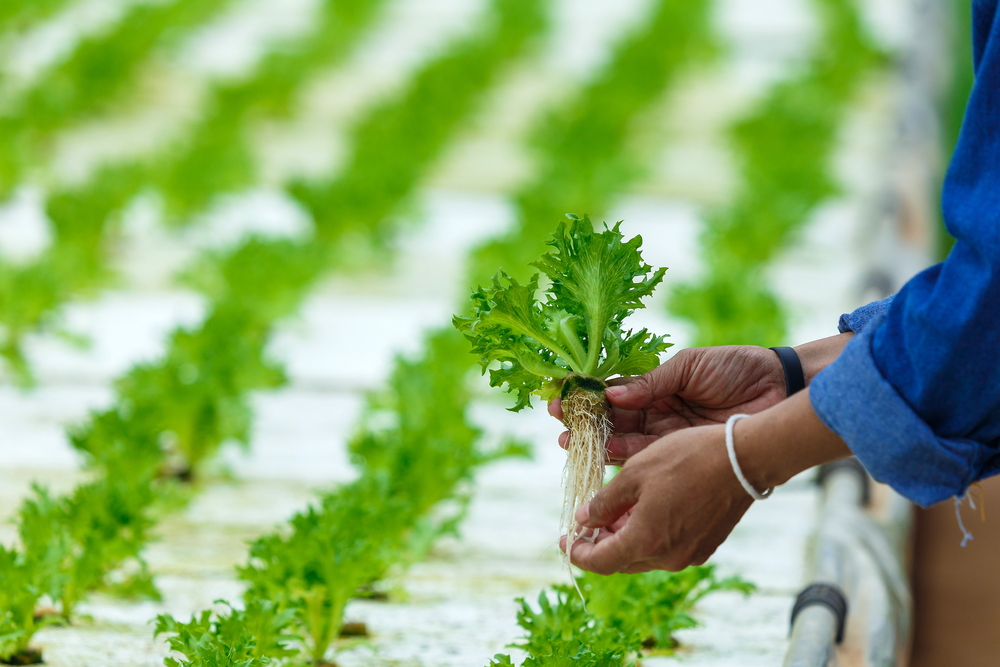Guest Article by Yemi Amu, 40 Under 40 2016 Cohort
With climate change, pollution, and a growing urban population throughout the world, modern societies are rightly becoming increasingly concerned with how we will feed ourselves in the coming decades. Integrating agriculture into our urban environments through urban farms promotes physical and mental wellbeing along with environmental education and hands-on skills for people in those communities. Research shows that urban agriculture increases the availability of healthy, fresh, and culturally appropriate food, promotes increased fruit and vegetable consumption, and improves physical activity among those involved in gardening programs. In addition, those who are directly involved in their growth and production are more willing to introduce new foods into their diets. Urban agriculture also contributes to increased plant, animal, and insect biodiversity, improves air quality, promotes carbon sequestration in soils, and increases shade for urban residents in the summer months.
In 2013, I started my aquaponics farm, Oko Farms, in Brooklyn as a way to transform a vacant lot with zero water access into a food production site to engage my community in the practice of soilless ecological farming.
We humans have been growing our own food for about ten thousand years. In that time, we have developed countless methods of farming that are suited to the various environments, both urban and rural, that we live in all over the world. Humans who lived in deserts developed irrigation that allowed them to grow vegetables in areas with very little rain while in other areas learned how to time rice crops around an annual monsoon season. Many traditional methods of farming don’t even require soil, but grow plants in water alongside aquatic ecosystems. Although many people now think of hydroponics and sterile indoor lab environments when they talk about growing without soil, the truth is that soilless farming is still used by many traditional farming cultures to grow plants and fish together while conserving water.
Agriculture is the technology that has allowed humans to settle in permanent societies, build cities, and develop many forms of art and culture. Our modern, industrial farming system uses chemical fertilizers and pesticides alongside heavy equipment to ensure large harvests every year. Food is grown by large farms to sell to consumers, often thousands of miles away, for profit, at the expense of the environment and our health. Before industrial farming, humans farmed on a much more local scale, and we developed technologies to work with the environment and nature to protect against times of drought and flood. At Oko Farms, we grow plants and animals together in an aquatic ecosystem to save water and produce protein. This is an ancient form of farming, called aquaponics, that has been used for thousands of years.
The consumption of fish and other aquatic animals is essential for many cultures today. Aquaculture is the world’s fastest growing food supply sector. Throughout history, many cultures have turned to the sea and lakes for abundant, fresh food. That said, overfishing, pollution, and harmful intensive aquaculture farming practices are problems we have dealt with for millennia. There is archaeological evidence to suggest that the Romans overfished many rivers and lakes throughout Europe.
The earliest evidence of aquaculture is found in China, dating back at least two thousand years or more. Ancient aquaculture involved building dykes, or large ponds, to hold fish. To get around the problem of fish waste building up and killing the fish (something everyone who ever had a goldfish at home should recognize), crops that would use the fish waste as fertilizer were also grown in the water. Building ponds and growing crops in said ponds also had the benefit of protecting against times of drought. In this way, until industrialization, people utilized nature and natural ecosystem processes to help them grow food. Human ingenuity created sophisticated water-farming systems that worked with and benefitted the natural environment. This form of farming can be seen today in the chinampas of Mexico, sustainable taro farming in Hawaii, in sustainable fisheries in Cambodia, floating farms in Bangladesh, and rice-fish farming known as sawah tambak in Indonesia.
We at Oko Farms also consider ourselves part of our local natural and community ecosystems. The water on our farm and the flowering plants we grow help natural pollinators and birds, and we have seen their numbers increase every year. We provide our community with access to local fresh fish and produce and host thousands of visitors who learn about environmental stewardship through sustainable farming.We use the sun and natural rainfall to grow our plants and replenish any water that our farm loses to evaporation. We utilize gravity to circulate water in order to minimize the electricity needed to power the pump.
Today, we can use urban farming as a way for us to mitigate the impacts of climate change in our communities, especially those that are most vulnerable. In the future, I hope more urban farms will use soilless farming to work with their natural environment and promote the health of their communities.
Sources:
“What Is Aquaculture.” ASC International, asc-aqua.org/learn-about-seafood-farming/what-is-aquaculture/.
Costa-Pierce, Barry A. Ecological Aquaculture. John Wiley & Sons, 15 Apr. 2008.
Mazoyer, Marcel, et al. A History of World Agriculture : From the Neolithic Age to the Current Crisis. London, Earthscan, 2006.
Trakadas, Athena. ““Exhausted by Fishermen’s Nets” Roman Sea Fisheries and Their Management.” Journal of Mediterranean Studies, vol. 16, no. 1, 1 Jan. 2006, pp. 259–272. Accessed 25 Jan. 2024.
Papanek, Alicia, et al. Social And Community Benefits And Limitation of Urban Agriculture, IFAS Extension, University of Florida https://edis.ifas.ufl.edu/publication/FY1517


